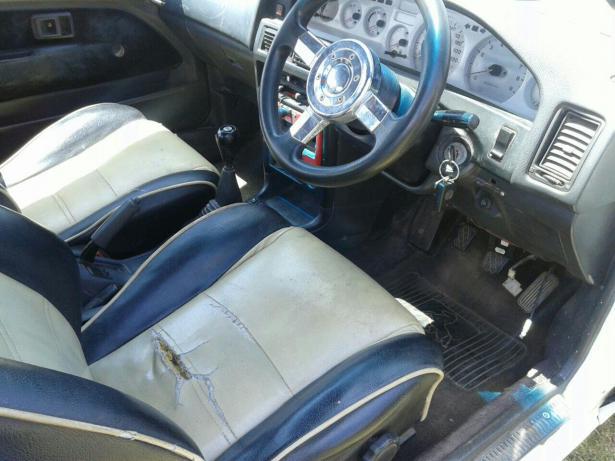Ten connected car questions for 2016

Ten connected car questions for 2016
1. How will Google bring self-driving cars to market? Google wants to bring collective self-driving cars to market by 2020. In 2015, it showcased signs of inching toward the marketplace by bringing aboard John Krafcik to lead the program and commencing testing in Austin, Texas. With a manufacturing deal with Ford reportedly in the works, two thousand sixteen may bring more concrete signs of Google’s go-to-market plan. Meantime, Google’s archrival Apple Inc. resumes to explore cars in secrecy.
Two. Will vehicle-to-vehicle communications truly happen? For more than a decade, the U.S. government has shoved technology that would permit cars to «talk» to one another to avoid crashes, using a wireless communications frequency. It hasn’t hit the market – however General Motors says it’ll be suggested on the two thousand seventeen Cadillac CTS – and the government hasn’t built any roadway infrastructure to enable it. Transportation Secretary Anthony Foxx has vowed to propose rules by the time President Barack Obama leaves office in January 2017, but will that happen?
Three. Can the auto industry patch its security slots? The dark side of connected cars is that every extra connection creates another way for a wrongdoer to build up access to a car’s internal network. A big reminder of this risk arrived in 2015, when security researchers showcased they could wirelessly tap into a Jeep Cherokee and plunge the brakes or shut off the engine. In 2016, automakers will be racing to make their cars more secure in hopes of outrunning the bad guys – and hoping nothing happens that might chill customers’ acceptance of connected cars.
Four. Will automakers catch up to Tesla’s over-the-air updates? Tesla Motors raised the bar by designing its Model S to receive smartphone-style updates over the airwaves. Now, other automakers are attempting to match it. Ford turned to Microsoft in two thousand fourteen for Wi-Fi-based updates to its Sync three infotainment system. Subaru ordered an infotainment system from Harman with built-in over-the-air updates. Expect many more companies to go after suit in 2016. Five. Will Silicon Valley’s car-buying services find fans? Fast-growing technology startups such as Beepi, Roadster, Shift and Carvana think online marketplaces could make ordering a car as plain as buying a pair of footwear on Zappos. With modern software, customers can order a fresh or used vehicle online (depending on the service) while avoiding the hassles and haggling of shopping at a dealership. Their growth in two thousand sixteen will be key in signaling whether such services are a flash in the pan or a lasting part of the automotive landscape. 6. Which suppliers will claim pole position for connected, automated cars? It looks like the car of the future essentially will be a supercomputer on wheels, with centralized processors substituting most of the dozens of modules in a modern car. Tier one suppliers such as Bosch, Continental and Delphi are girding themselves for such a shift, and coalitions are forming around key components (see the autonomous-driving computer being developed by Nvidia, Elektrobit and Infineon). Expect more of the same in two thousand sixteen as suppliers switch with the times.
7. Will the adoption of Autopilot provoke a pushback? This time last year, Mercedes-Benz seemed to hold the lead in automated driving. A year later, Tesla Motors leaped past Mercedes-Benz with its powerful Autopilot system, seemingly because of an unmatched readiness to take risks. With drivers taking their palms off the wheel at highway speeds, a crash now seems almost unavoidable. If the unthinkable happens in 2016, how would the public, press and government react?
8. Will customers grow fastened to CarPlay and Android Auto? The summer of two thousand fifteen brought a rapid ramp-up of Apple’s CarPlay and Google’s Android Auto, with General Motors, Honda and Volkswagen delivering the most cars with these two smartphone interfaces. In 2016, as sales rise and holder surveys go out, it will become clearer whether these software packages are essential or on track to be forgotten like the iPod hookups very first suggested in 2004. 9. When will cars and homes speak the same language? Connecting a car to a smartphone is useful, but so is connecting a car to a home and the devices inwards. Automakers are moving toward that future: Honda, Toyota and Nissan sell systems in Japan that permit a car possessor to link an electrical vehicle or hydrogen car to a home for emergency power. Expect much more in two thousand sixteen as consumer electronics companies devote a greater share of their attention to the Internet of Things.
Ten. How quickly could virtual reality arrive in the car business? Just as two thousand fifteen was the year of the smartwatch, 2016, with the launch of systems such as Oculus Rift, could become the year of virtual reality. Automakers already are testing similar technology for showroom demonstrations (Volvo), vehicle maintenance (Hyundai) and driving (Mini) as well as advanced head-up displays for dashboards. If virtual reality is a hit for entertainment, it quickly could be adopted for cars, too.